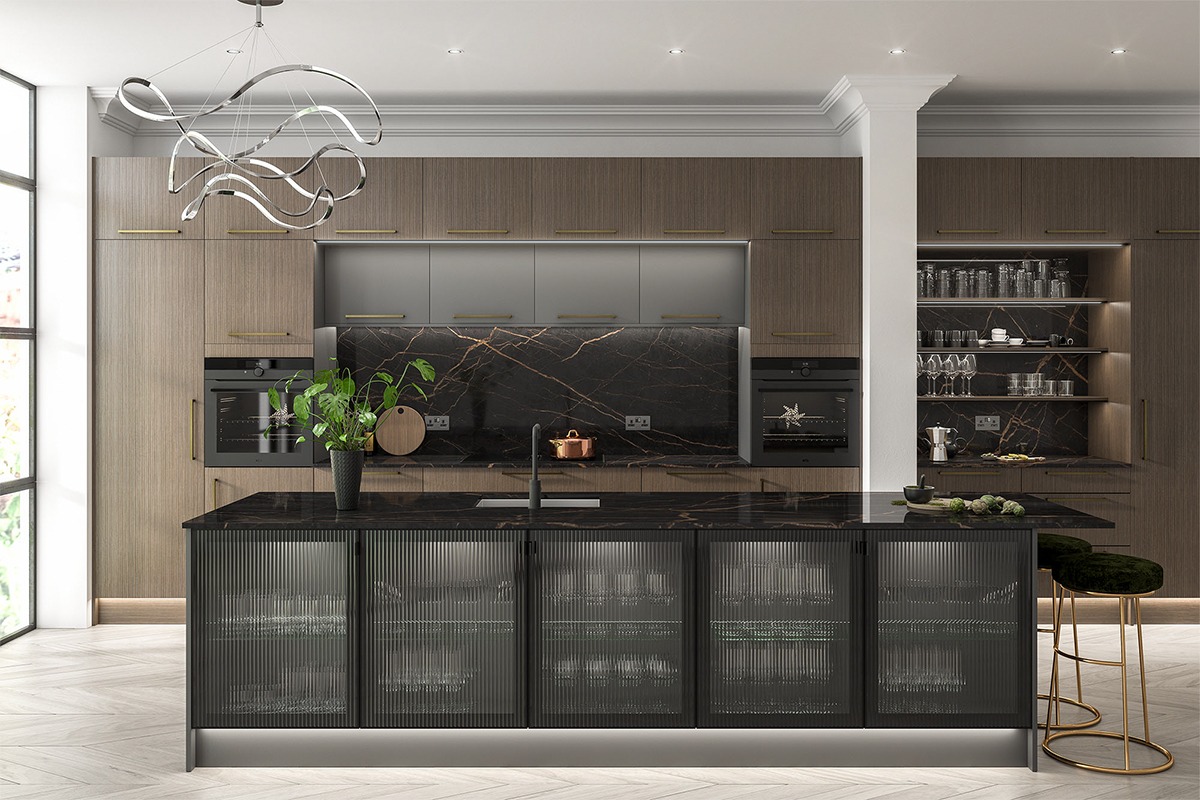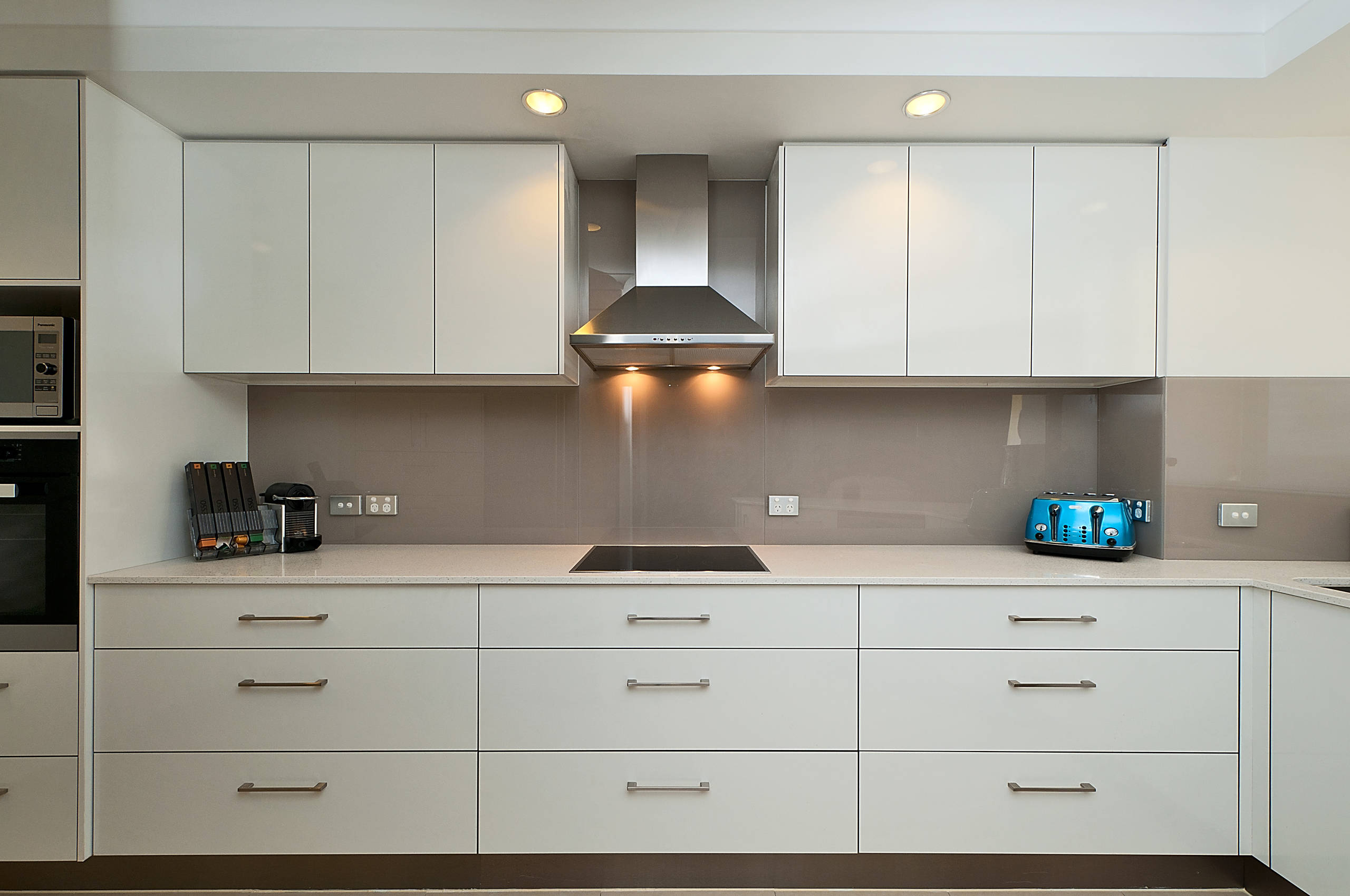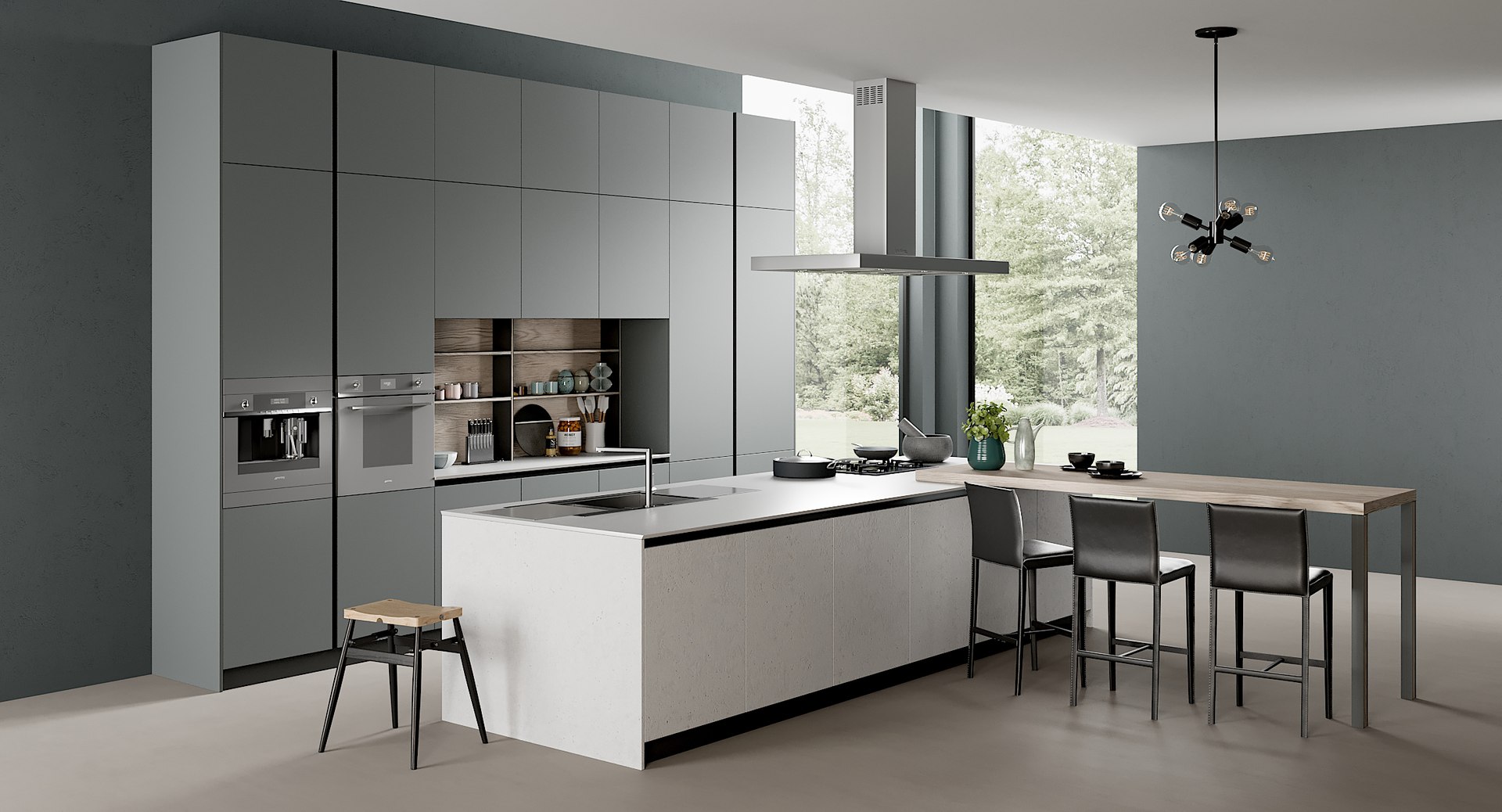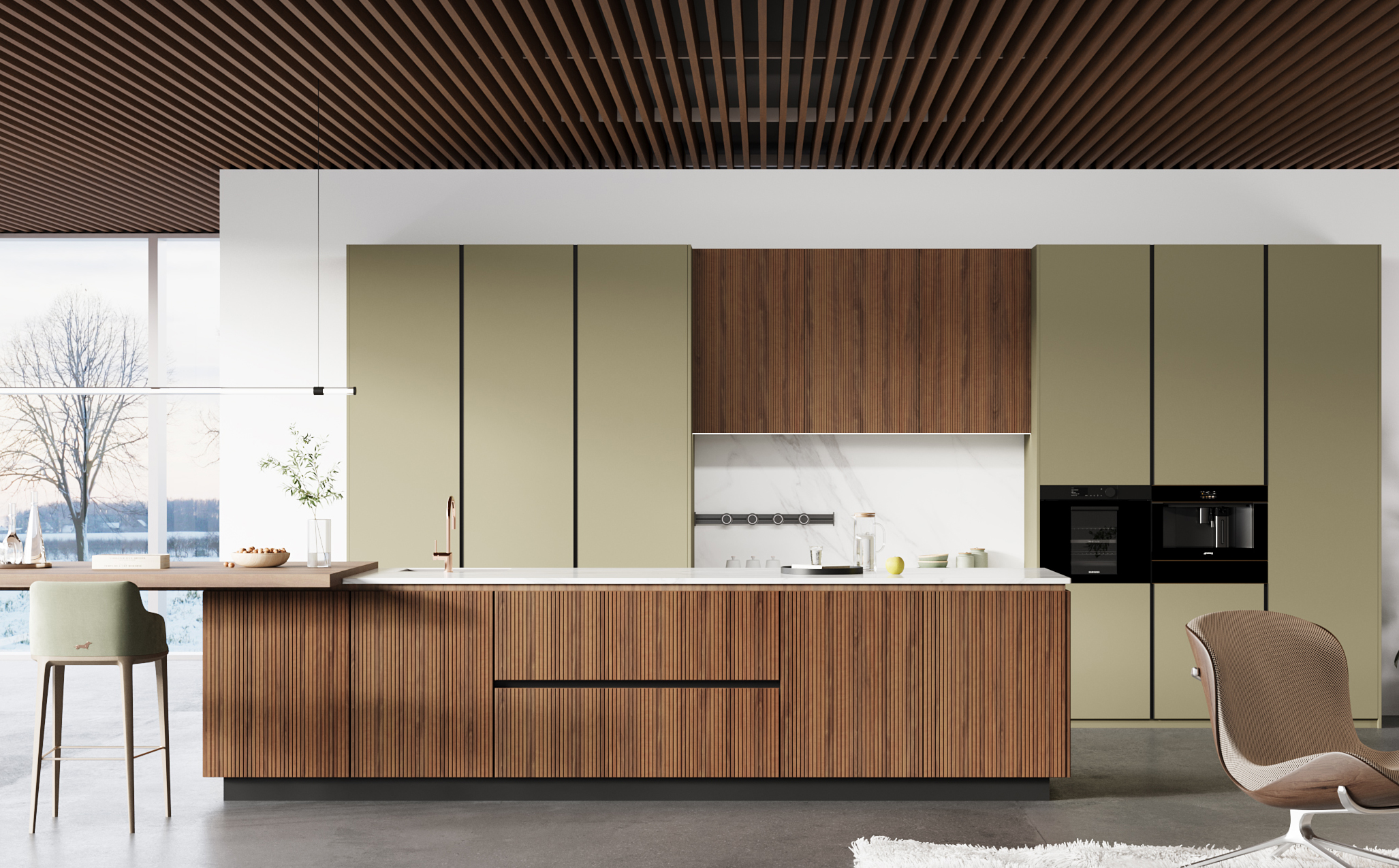In today's fast-paced real estate development, hotel renovation and large-scale rental apartment projects, the kitchen, as the core functional area, the procurement and installation of its cabinets have always been the focus and challenge of project management. Traditional custom cabinets often face challenges such as long delivery cycles, high costs, complex logistics, and inconsistent on-site installation quality.
Against this backdrop, RTA kitchen cabinets, with their outstanding supply chain efficiency and modular design concept, are becoming a strategic choice for an increasing number of large-scale projects. However, in the face of a wide range of products and suppliers in the market, how to select the truly best RTA kitchen cabinets that meet the requirements of large-scale and high standards, and find reliable RTA kitchen cabinet suppliers, has become a knowledge that decision-makers must master. This article will deeply analyze all aspects of RTA cabinets and provide you with a complete decision-making guide from theory to practice, ensuring that your project finds the best balance between budget, schedule and quality.
What Are RTA Kitchen Cabinets
RTA kitchen cabinets represent a product that fundamentally changes the traditional logistics and installation methods of cabinets. Instead of being transported in a complete cabinet form, all the panels, hardware, and connecting components are delivered to customers in a flat-pack format.
• Flat packaging: All the panels are laid flat and stacked together, significantly reducing the transportation volume, lowering logistics costs and storage space requirements. This is particularly advantageous for large-scale projects that require the one-time purchase of hundreds of sets of cabinets.
• Pre-drilling and systematic connection: Each panel is pre-drilled with high-precision holes using the 32mm system in the factory and is equipped with standard connecting components such as positioning wooden dowels, cam locks and screws. This makes the on-site assembly process like "assembling a large Lego set", with clear procedures, greatly reducing the reliance on the traditional carpentry skills of installation workers.
• Standardization and modularization: RTA cabinets are based on standard modules. The base cabinets, wall cabinets and high cabinets all have unified depth and width dimensions. By combining different modules, they can fit most kitchen spaces.
For RTA kitchen cabinets designed for home use, this model also brings convenience to individual users. However, the true value breakthrough lies in their application in large-scale scenarios.
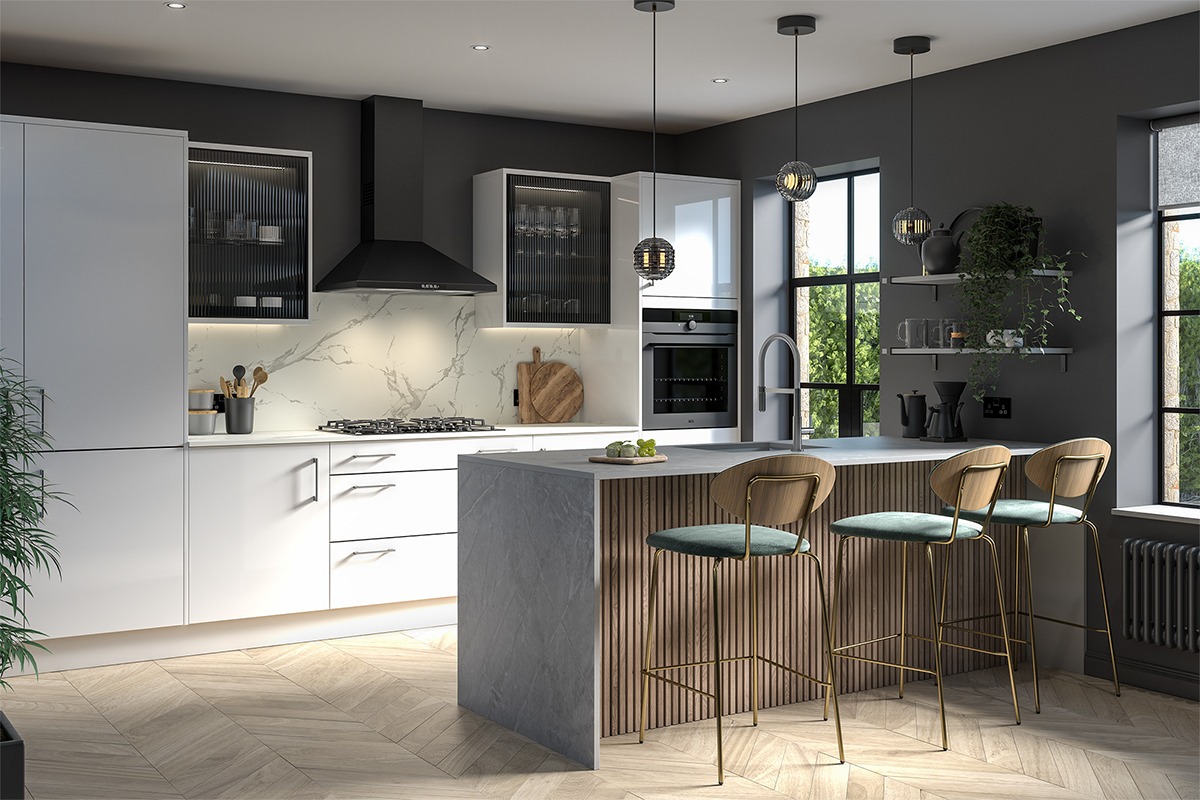
kitchen cabinets ready to assemble
Why Choose RTA Kitchen Cabinets for Your Space
Choosing RTA cabinets is more than just selecting a product. It's choosing an efficient, controllable project management model. For large-scale projects, its advantages are particularly evident:
Ultra-high cost control
Logistics cost savings: Flat packaging can save up to 60% of transportation space compared to finished cabinets, directly translating into significant savings in freight costs.
Labor cost optimization: The assembly process is simple and efficient, eliminating the need to hire highly skilled senior carpenters. Ordinary workers can start working after a brief training, resulting in lower labor costs and faster installation speed.
Reduction of material waste: Standardized production in the factory maximizes the use of panels, avoiding the huge waste and dust pollution caused by on-site cutting.
The Project's Duration is Highly Controllable
The modular production model means that its production cycle is much shorter than that of traditional custom cabinets. Reliable suppliers such as AIS Kitchen can even provide a rapid delivery solution to ensure the project's progress.
Consistency and Traceability in Quality
All panels and hardware undergo automated cutting, edge banding, and pre-drilling in a factory environment, ensuring consistent craftsmanship and quality across every cabinet set and batch.
The use of brand-authorized hardware and environmentally compliant panels guarantees product durability and safety from the outset, eliminating the risk of substandard adhesives or materials that may be used in on-site fabrication.
Style and Design Options for RTA Kitchen Cabinets to Fit Any Space
The belief that RTA cabinets are limited to a single style is a common misconception. In fact, to meet the diverse aesthetic demands of RTA kitchen cabinets for both home use and commercial projects, modern RTA cabinets offer an extremely wide range of styles and design options.
Traditional Style
Features: Elegant frame doors, intricate carvings, warm-toned wood veneer or antique paint finish
Best for: High-end residences, hotel suites, projects that emphasize classic and luxurious elements.
Modern Style
Features: Simple and smooth lines, handle-less design, glossy or matte finish, and the integration of elements such as metal and glass.
Best for: modern spaces such as urban apartments, boutique hotels, and office kitchen facilities.
Rustic Style
Features: Weathered treatment, natural wood grain texture, rugged stone countertop combination, with colors mainly in earth tones.
Best for: Resorts, specialty restaurants, and residential projects that emphasize a natural and relaxing atmosphere.
Customizable Options
Although it is a modular product, the top RTA kitchen cabinet suppliers still offer a considerable degree of flexibility:
• Door panel styles and materials: As provided by AIS Kitchen, you can choose from wear-resistant melamine, moisture-resistant PVC coating, or high-quality lacquer surface according to the order specifications.
• Colors and sizes: There are dozens of color options available. And by combining different width and height modules, it can perfectly fit any irregular space.
Key Factors to Consider When Choosing the Best RTA Kitchen Cabinets
When choosing from a large number of RTA kitchen cabinet suppliers, it is necessary to establish a systematic evaluation system. The focus should be on the five core dimensions of materials, structure, process, planning and budget, as these directly determine the final outcome and long-term value of the project.
Material Quality
Panel base material: It is essential to choose particleboard or medium-density fiberboard that meets the E0 or E1 environmental protection standards to ensure indoor air quality. For high-end projects, multi-layer solid wood boards can be considered, which offer higher strength.
Hardware accessories: Hinges and drawer slides are the most frequently used parts. They should be prioritized to choose high-quality brands and ensure that the suppliers provide original factory authorization certificates.
Structural Craftsmanship
Edge Banding Technology: Premium edge banding should be tight, flush, and free of glue lines. PUR hot-air edge banding technology, renowned for its superior bonding strength and moisture resistance, is a hallmark of best RTA kitchen cabinets.
Back Panel and Load-Bearing Capacity: Inspect the back panel thickness (no less than 5mm) and its attachment method to the cabinet body. The cabinet structure should feature multi-layer slat reinforcement to ensure adequate load-bearing capability.
Surface Treatment and Color
Finishing: Melamine veneer is durable and cost-effective; PVC coating can create complex shapes; Lacquer and PET can provide excellent modern visual effects and easy cleaning properties.
Color Selection: It should align with the project's overall design aesthetic. Practicality must also be considered—light tones create a more spacious feel in compact areas, while dark hues enhance texture but may show dust more readily.
Measurement and Spatial Planning
Accurate measurement is the basis for success. It is vital to confirm the supplier's measurement guidelines and recommend that they be evaluated by professionals. Excellent suppliers will provide competent design services, create CAD drawings, and prevent space conflicts in advance.
Budget Constraints
Clearly define the budget range at the beginning of the project. The RTA kitchen cabinets offer significant cost advantages, but there are significant price differences among different configurations, such as the material of the door panels and the brand of hardware. It is necessary to find the optimal balance point among cost, quality and design.
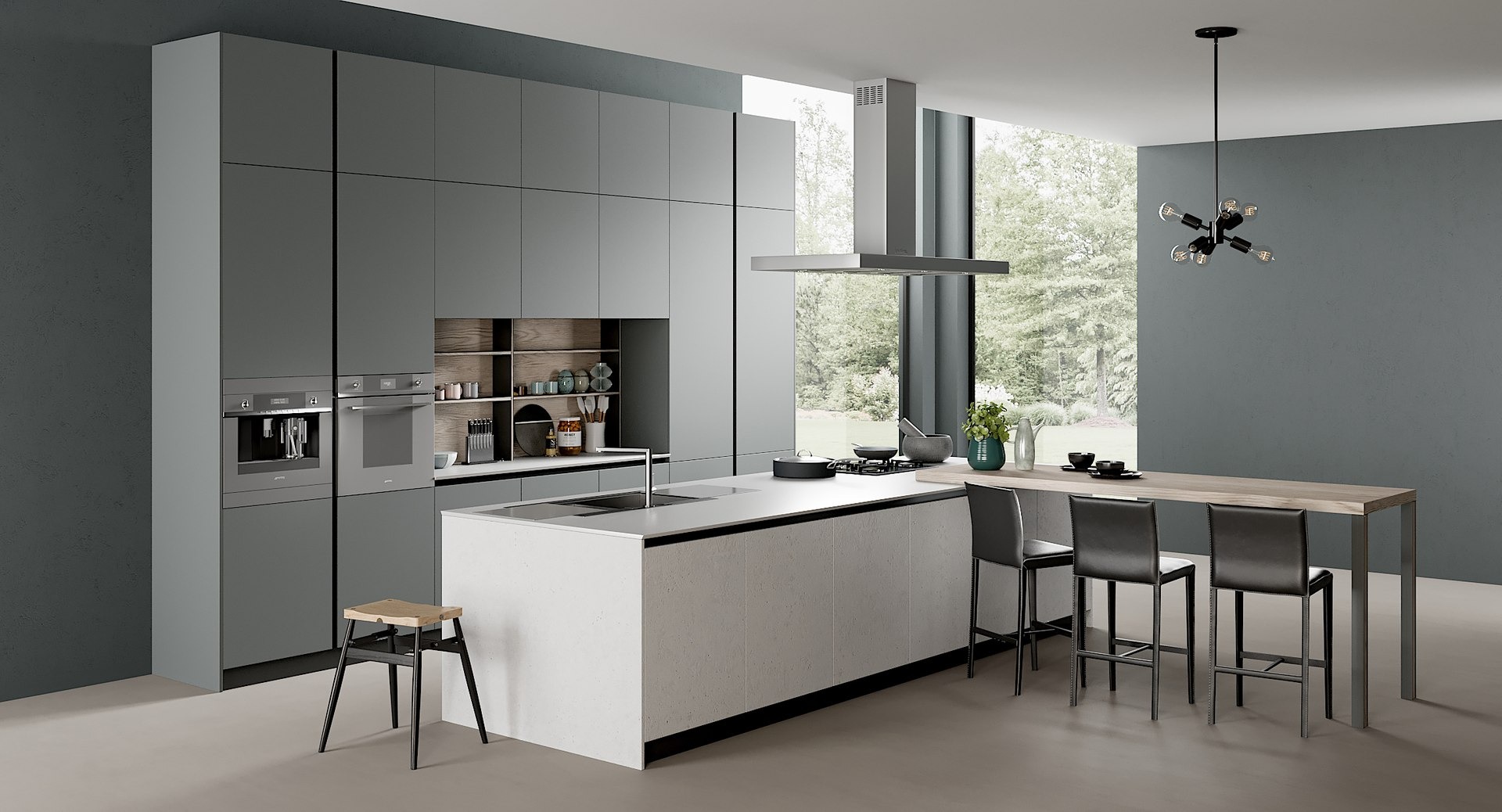
custom lacquer kitchen cabinets
The Role of RTA Kitchen Cabinet Suppliers in Large Projects
In large-scale projects, the comprehensive capabilities of professional RTA kitchen cabinet suppliers have a profound impact on the project's cost, schedule and final quality. Choosing a reliable supplier is equivalent to taking out a key insurance policy for the smooth progress of the project.
1. Supply Chain Assurance and Capacity Protection Function
Excellent RTA kitchen cabinet suppliers possess a robust and stable raw material supply chain and large-scale automated production capacity. They can ensure the continuous and stable output of a large quantity of high-quality best RTA cabinets within the tight schedule stipulated in the contract. They not only handle regular orders but also effectively manage design changes and emergency supplementary orders that may occur during the project, thus safeguarding the overall progress of the project.
2. Quality Consistency and Standardized Control Function
When a project involves hundreds or even thousands of kitchen units, maintaining quality consistency is of utmost importance. The supplier assumes the role of the "quality gatekeeper". By establishing a full-process quality management system from raw material entry, production process to finished product delivery, it ensures that each set of RTA kitchen cabinets for home use complies with unified and stringent standards, eliminating batch-related customer complaints caused by quality fluctuations.
3. Design Optimization and Technical Support Function
Professional suppliers not only provide products but also solutions. They typically have experienced design teams capable of conducting precise kitchen space planning, verifying plumbing and electrical points, refining drawings, and compiling material lists based on the client's architectural blueprints. This pre-emptive technical support can effectively prevent on-site installation conflicts caused by design oversights, and save project costs and time.
4. Risk management and rapid response support
If there are issues such as minor damage during transportation or individual defective parts found during installation, improper handling can directly affect the local construction period. Reliable suppliers have established a mature rapid response mechanism, which can provide strong after-sales support for the project. They ensure that after receiving the problem feedback, they can immediately send out replacement parts or repair parts, minimizing the impact of minor incidents on the overall project and serving as the most reliable back-up for the project team.
Conclusion
Selecting RTA kitchen cabinets for large-scale projects not only effectively reduces transportation costs and construction complexity but also meets project requirements for design diversity, efficient delivery, and flexible space utilization. Whether your project involves residential bulk delivery, hotel kitchen fittings, long-term rental apartment operations, or multinational distribution channel expansion, choosing the best RTA kitchen cabinets requires comprehensive evaluation across multiple dimensions: material quality, structural stability, supply chain capability, style flexibility, and budget.
Among numerous RTA kitchen cabinet suppliers, AIS Kitchen stands as a specialized RTA provider, consistently delivering high-quality RTA products to overseas construction projects, real estate enterprises, and major distributors. Its RTA series features flat-pack packaging, pre-drilled holes, and quick-assembly structural design, offering multiple surface finishes including melamine, PVC, and lacquer to meet residential and light commercial needs. It is particularly suited for high-volume demand, tight-schedule projects, and multinational procurement clients.
If you're seeking RTA kitchen kitchen cabinets that balance consistent quality, cost-effectiveness, and robust supply chain capabilities, AIS Kitchen stands as a reliable long-term partner.
FAQ
Q1: What kind of supplier can be regarded as a reliable RTA kitchen cabinet supplier?
A1: A reliable RTA kitchen cabinet supplier should have stable production capacity, strict quality control, complete flat-pack packaging, a loss-prevention system, and the ability to respond promptly to engineering requirements. At the same time, it should be able to provide sample support, design drawings, installation guidelines and other services.
Q2: Are the quality and engineering standards of RTA kitchen cabinets for home use the same?
A2: Generally speaking, the structure and materials are basically the same, but RTA kitchen cabinets for home use in the residential sector place more emphasis on personalized design and functionality, while RTA used in engineering applications place greater importance on batch stability, durability, and cost control.
Q3: How to determine if a product belongs to the best RTA cabinets?
A3: The best RTA cabinets usually have the following characteristics: high environmental protection grade of the materials, stable structure, reliable hardware quality, durable surface treatment, convenient installation, good color difference control, and the ability to maintain consistency in bulk purchases.


